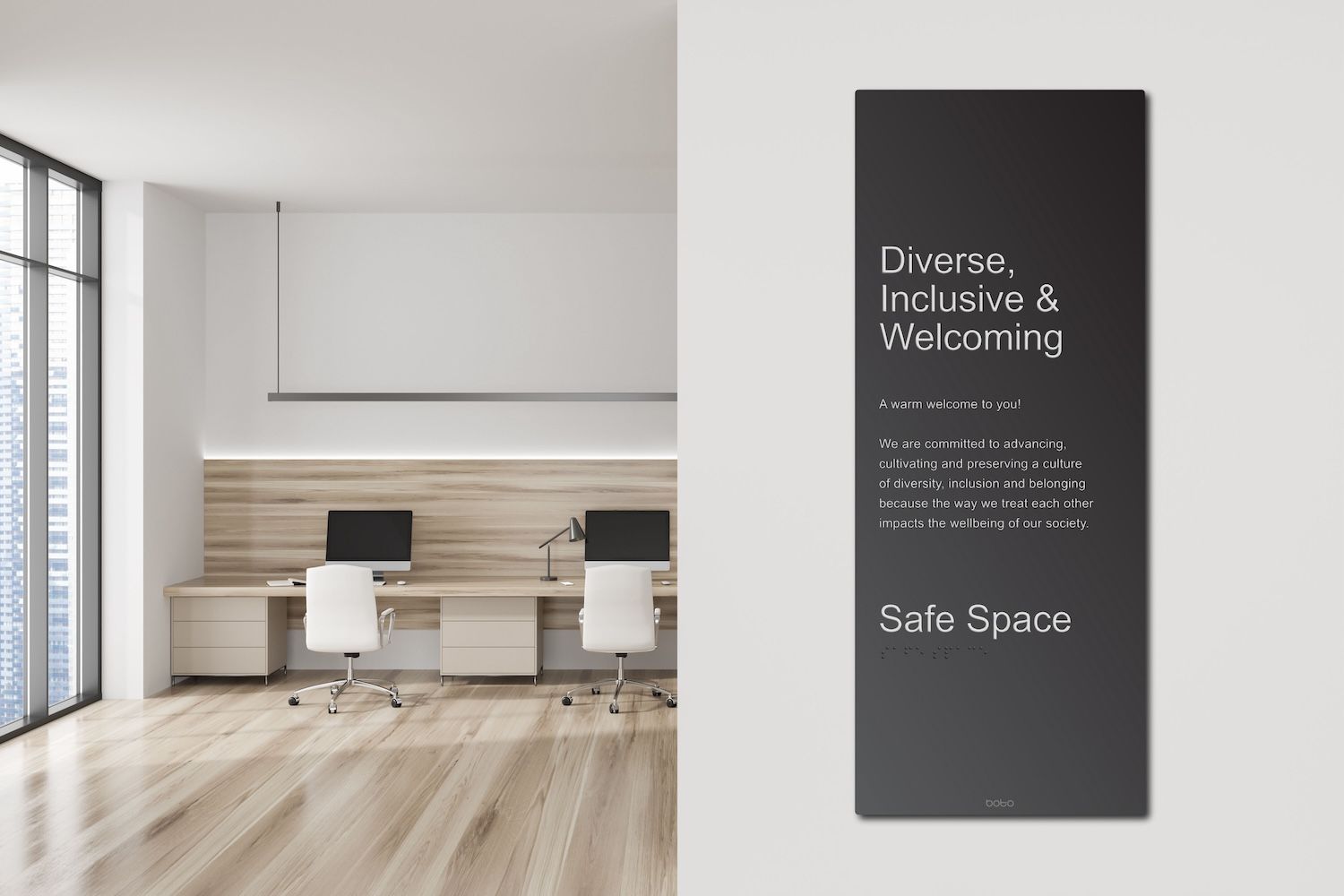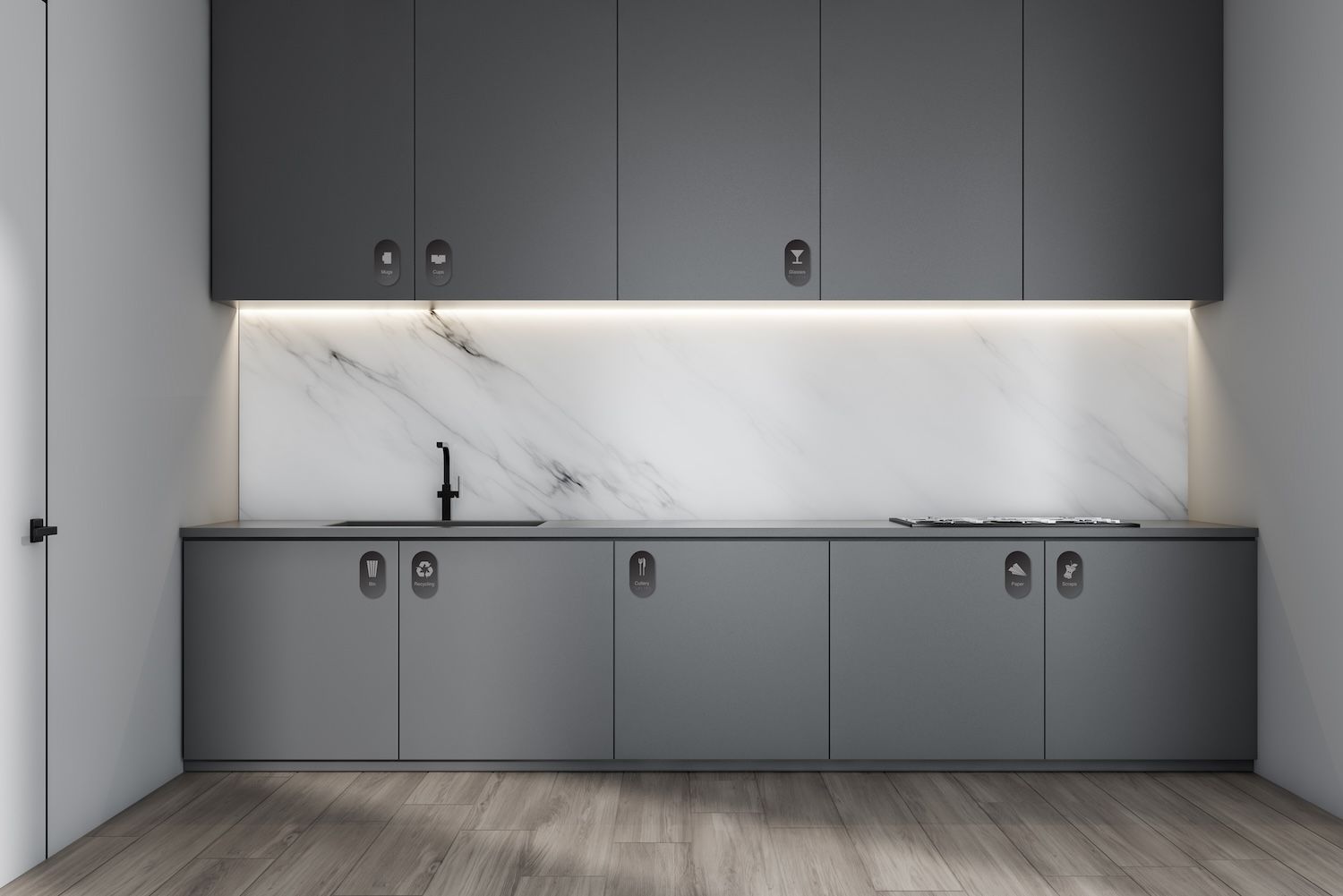Interview with Eva Krane, Founder of Studio Z and Boto
)
Meet Eva, founder of Studio Z and the innovative new venture, Signage Made by Boto. With a background in product design and interior architecture, Eva brings a global perspective and deep passion for creating inclusive and accessible spaces.
Can you tell us a little bit about yourself and what you do?
My name is Eva. I grew up in a rural area of Northern (West-)Germany in the 80s. I spent my childhood playing baseball, soccer, and ice hockey with my two older brothers and their friends.
My Mum was a chef, and my Dad was a mechanic turned engineer. Our family had an amazing workshop and were often building or repairing things together. I loved the process of creating so, when I decided to study product design and interior architecture in the Netherlands, it seemed like a natural progression to my hands-on childhood of dreaming, designing, creating, and making.
I was quite an adventurer in my 20s and traveled extensively. My wanderlust took me to live in the south of France, London, and Los Angeles before finding myself at home in Sydney. Every place has unique features, similarities and differences in people and culture. I also love language and how certain words only exist in certain places. I am fascinated by how meaning is influenced by context, an individual's lived experience, and the interpretations we put onto meaning.
I have had my design studio, Studio Z, for 8 years. We provide custom-made products to the architectural industry. The products we design include signage, glazing film, custom handwoven rugs, fabrics, and wallcoverings, mostly for the commercial sector. All products are made to order, and most are locally manufactured. Architects can specify a pattern from our existing library or commission us to create something bespoke for a specific project. I also advise on regulations and optimising wayfinding through my products and designs.
We release a new collection annually, the inspiration can come from anywhere but usually from areas I am passionate about including literature, philosophy, nature, and society at large. The patterns translate narrative into visual stories and signage assists in the delivery of it all.
I am especially interested in themes that cover belonging, psychology, and societal structures, how people experience space and the way certain elements can contribute to exclusion rather than being inclusive and welcoming to all. I saw an opportunity for a product that could improve the experience of some of our more vulnerable groups of people… this is how my new business, ‘Signage Made by Boto’ was conceived.
How did you become passionate about designing signage that balances accessibility with aesthetics?
Well, I didn’t wake up one day thinking, ‘Yes, I’ll become a toilet signage designer’! It was a journey. Throughout my travels around the world, I found myself taking pictures of signage solutions at airports, train stations, museums, restaurants, libraries, and educational institutions. Often what was missing was design orientated but what stood out was the lack of inclusion in design, especially for minorities and non-binary recognition. It took me years, the encouragement of many people, and situations along the way to navigate the way-finding space.
Standard signage currently available in Australia is often an afterthought or a last-minute inclusion - a regulatory box that needs to be ticked. I’ve seen signage being taken down after the DDA inspections, which is not only un-ethical but also unlawful. More inclusive terminology and symbology can influence tolerance by giving subtle hints on how we relate to each other and move through the world.
My life experience has led me to have encounters with a great cross-section of people. People of mixed abilities, cultural differences, and gender diversity in particular. I have had close friends who have gone through gender transitioning, their journey has given me insights into the vulnerable moments that can arise, especially in public spaces. I wanted to create beautiful signage solutions to be proud of, not an afterthought. Our signage packages are beautiful, easy to specify (or order online), inclusive, and make people of all abilities and backgrounds feel welcome. Universal design principles aim to create products, environments and services that are welcoming and usable by the most diverse range of people. This is the goal of Signage Made by Boto.
What challenges you as a creative?
I find closed-minded attitudes challenging. Conservatism, misogyny, judgemental or narrow-minded people and groups. People who avoid curiosity and are unwilling to join the journey, change perspective, and take the lead on a new idea. I believe in kindness, inclusion, and that we are all equal.
Every challenge is an opportunity to make a difference. My goal is to shed light on blind spots in myself and others. I recently came across a statistic that 83% of female migrant women in the construction industry have experienced sexual harassment. What a chilling number and hindrance to retaining talent and creating a diverse workforce. How on earth can we tackle the big issues, like global warming and the polarisation of societies, when we can’t live and work peacefully together?
Overall, Sydney is a great example of a peaceful multicultural society, but we can always do better and set a precedent for other countries at the same time. With Boto, I’d like to develop signage pieces that tackle these issues.
Another challenge is the notion of quick and fast in the design industry, without much consideration for the long-term consequences on people, places, and the planet. Providing quality products with competitive pricing whilst focussing on local manufacturing is a long-term strategy. I truly believe this is attractive for our community and civic institutions especially.
With such diverse sectors as retail, health, education, and workplace, how do you adapt your design strategy to each unique setting?
Whilst there are common aspects to signage and way-finding across these sectors, each project requires a slightly different strategy which is refined to suit the project and audience. Terminology and design are influenced by the type of building, its location, and the people navigating the space. In multicultural settings, language and symbology may be a big factor, in a cultural facility or especially in hospitality settings, the tone of voice and playfulness of the design may be more pressing. In health and aged living it’s a lot more about functionality and ease of navigation. Education can be nurturing or informative to underpin the institution’s values and connection to Country.
I’d love to work on more projects where we can expand on language and understanding and inclusion of the longest-living culture in the world, whilst I also see opportunities in the multi-cultural sector and mixed abilities realm. Neurodiversity is also an interesting area where I believe we will see much change in the coming years. Quiet spaces or hours of operation have already become popular in supermarkets and this is also affecting the workspace and the entertainment industries.
Can you talk us through your creative process?
International, local, and societal research from a variety of sources including words and visuals assists me to form a concept. I am not very process-driven, but I think deeply about ideas, designs, products, and the why. Guided by intuition as well as integrating what a project needs, rather than what the client wants. Often the result is a bit of both ;)
On a more personal level, I went through a period of a few years when I questioned almost everything I was doing. I was looking for deeper meaning in my work and my life. With the help of mentors, friends, and therapists I was able to define my values and goals which has led me to create a platform that allows me to connect with people who share my values and create a safe community for myself at the same time. Having experienced emotional neglect, harassment, and serious sexual assault has given me insights into trauma-informed decision-making and has motivated me to create long-lasting change. I believe that the work we choose wholeheartedly will give us meaning and become an integral part of our lives and extended identity. Here is to creating safe environments for generations to come!
What has been your biggest influence (person or experience) career-wise to date?
That’s a tough one. I can’t pinpoint one person or experience as I believe that we are a product of our environment and that a career is not linear.
I am inspired by history and literature that focus on achievements by women and LGBTQIA+ people, psychology, and philosophy.
I am fascinated by the story of the physicist and mathematician Mileva Marić, Albert Einstein’s first wife. Her contributions to the theories published under her husband's name and the unfortunate reality of not being recognised at the time. The poetry of Rupi Kaur and Audre Lorde gives my soul a place to dwell. The work of XYX Lab at Monash University is an incredible resource for anyone looking into gender-sensitive design practices and theory. They make spatial inequity visible in creative and informative ways.
Philanthropist Judith Nealson who offers Sydneysiders free entry to the White Rabbit Gallery and Phoenix, what a hero! Marina Abramovic and her performances make us think about the human condition. International thought leaders Teal Swan, Brenee Brown, Gabor Maté, and young activists Chanel Contos and Sarah Williams. These are the kind of people I look up to and their work has greatly influenced my thinking and the choices I’ve made thus far.
I have reached a point where the boundaries between career and personal interests have blended with no clear distinction between them currently. When we make space for personality in our workplaces, respect for diversity and different perspectives and lifestyles can flourish and we open ourselves up to be influenced by wonderful people from all walks of life around us.



